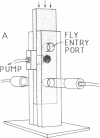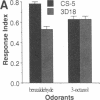Abstract
A Drosophila mutant was isolated and shown to exhibit defective response to the chemical odorant benzaldehyde in two distinctly different behavioral assays. The defect exhibited chemical specificity: response to three other chemicals was normal. The mutant also showed abnormalities in pigmentation and fertility. Genetic mapping and complementation analysis provide evidence that the olfactory, pigmentation, and fertility defects arise as a result of a lesion at the pentagon locus. The specificity of the olfactory defect suggests the possibility that the mutation may define a molecule required in reception, transduction, or processing of a specific subset of chemical information in the olfactory system.
Full text
PDF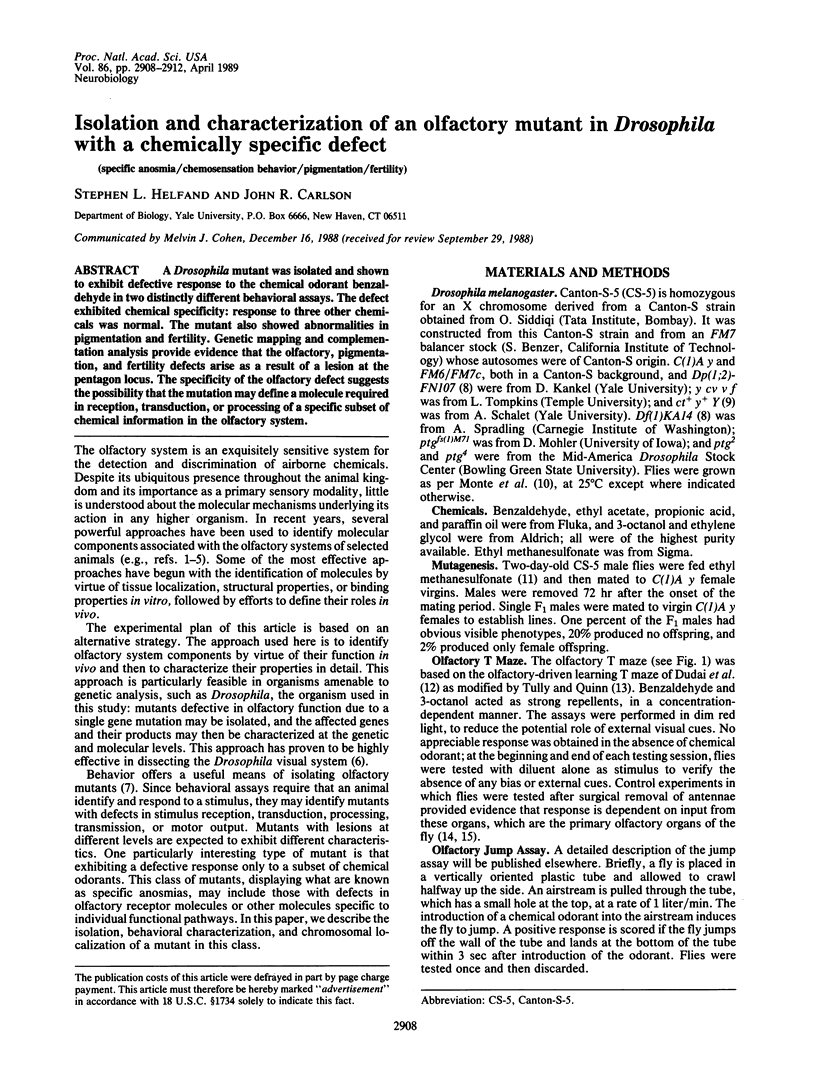
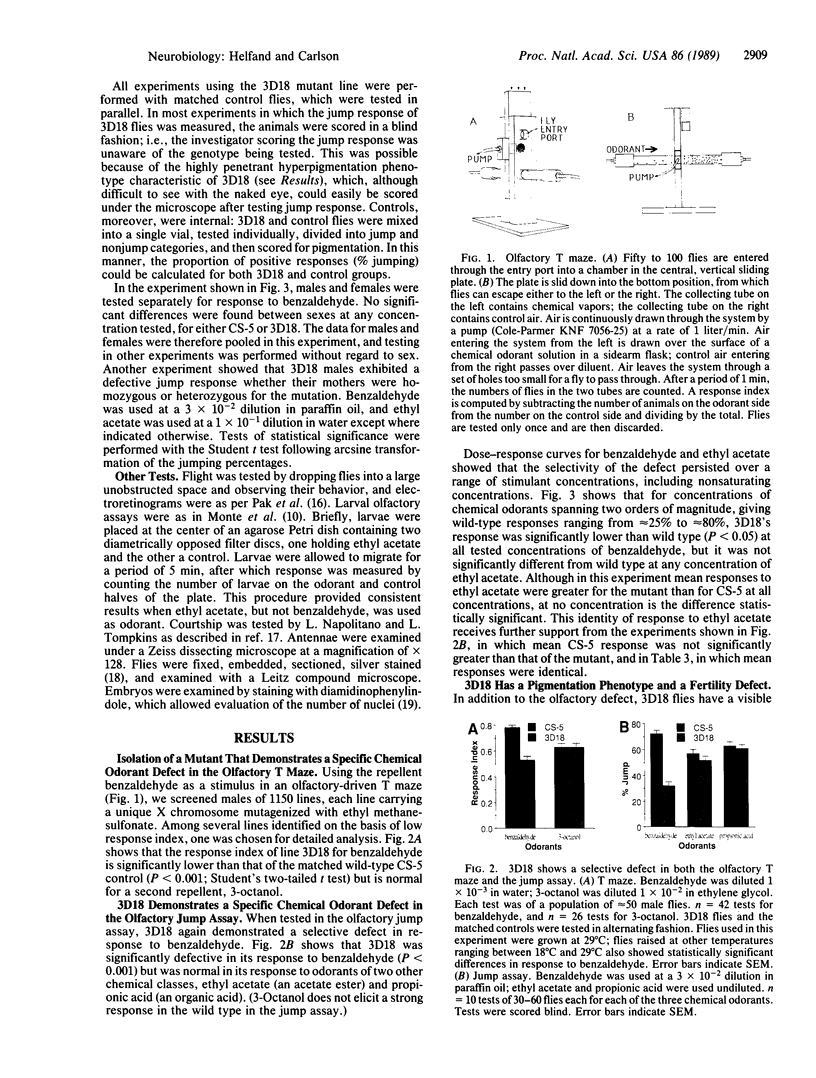
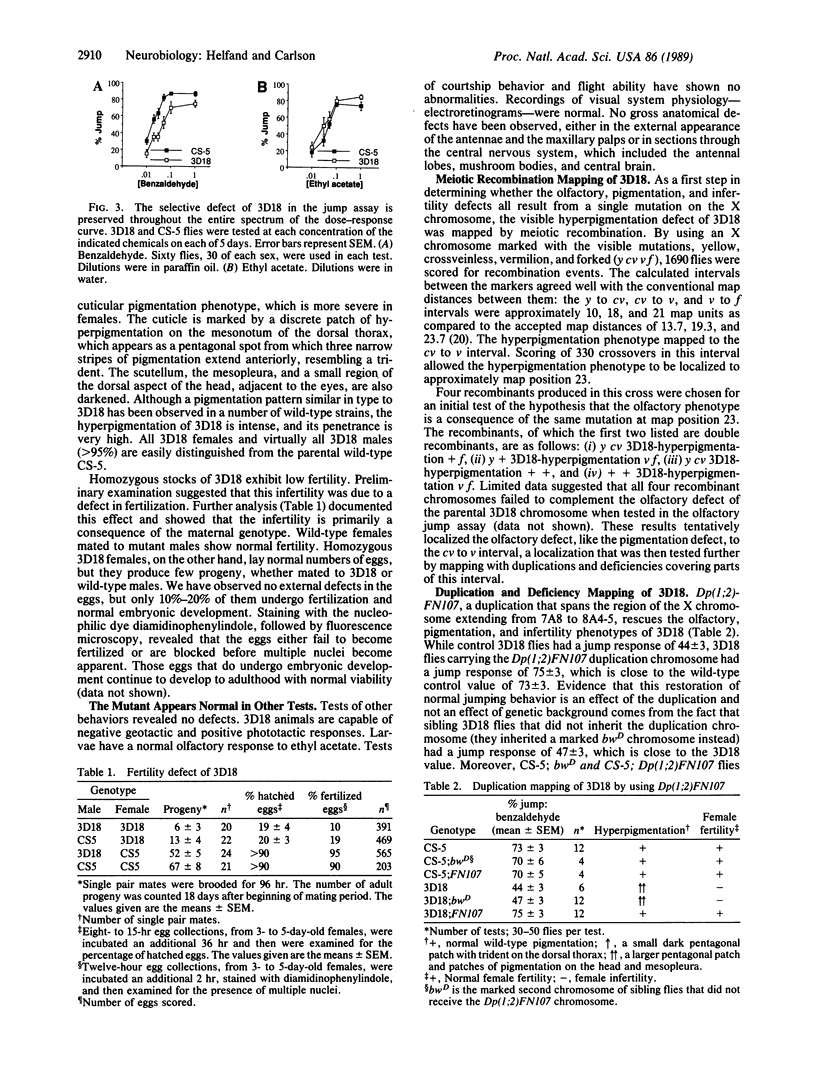
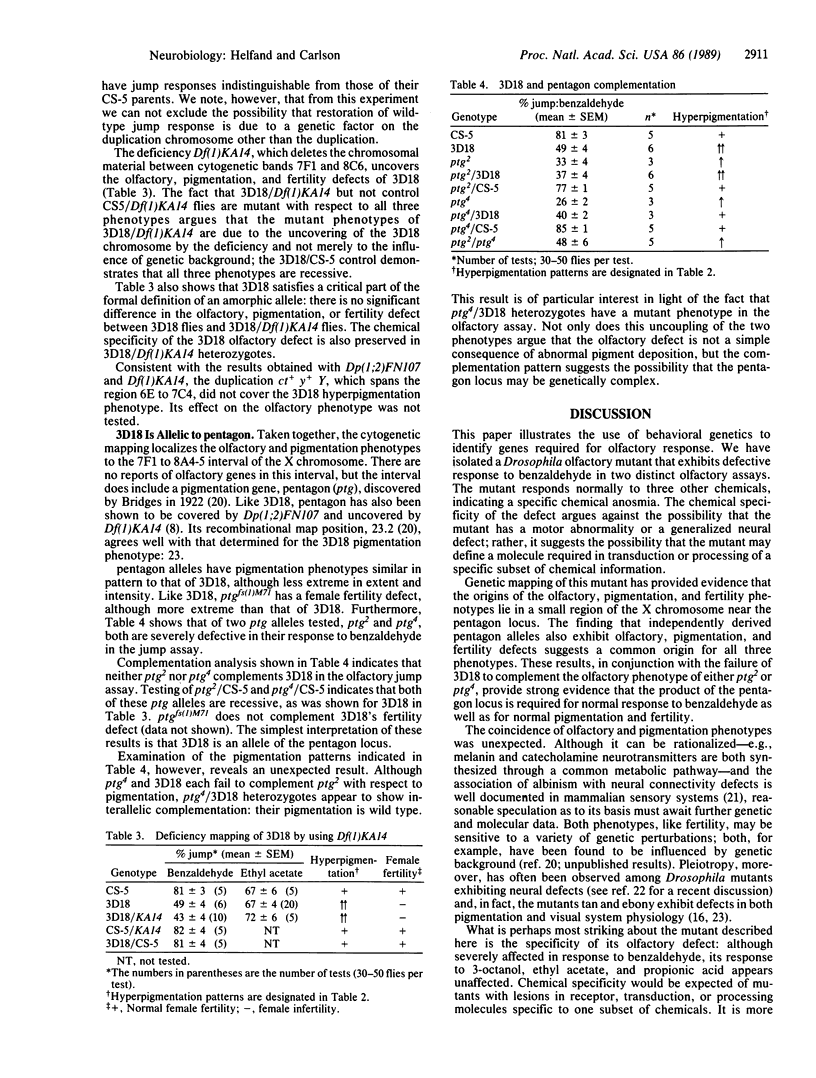
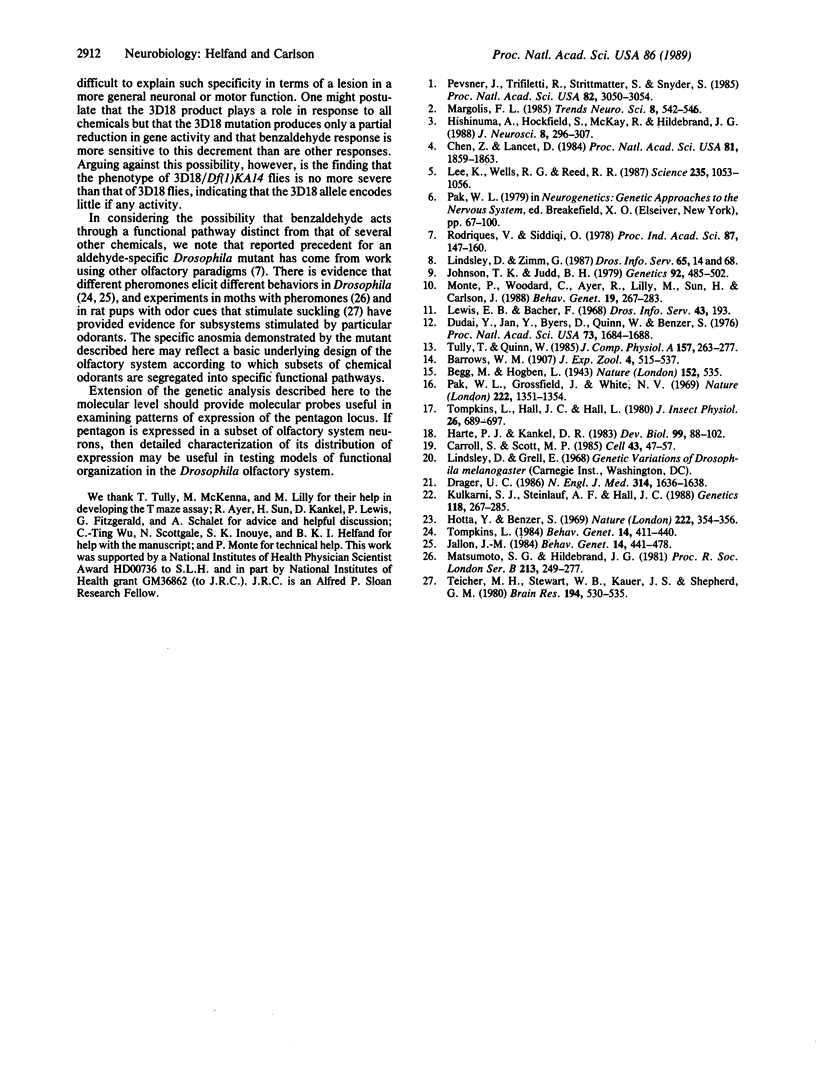
Images in this article
Selected References
These references are in PubMed. This may not be the complete list of references from this article.
- Carroll S. B., Scott M. P. Localization of the fushi tarazu protein during Drosophila embryogenesis. Cell. 1985 Nov;43(1):47–57. doi: 10.1016/0092-8674(85)90011-x. [DOI] [PubMed] [Google Scholar]
- Chen Z., Lancet D. Membrane proteins unique to vertebrate olfactory cilia: candidates for sensory receptor molecules. Proc Natl Acad Sci U S A. 1984 Mar;81(6):1859–1863. doi: 10.1073/pnas.81.6.1859. [DOI] [PMC free article] [PubMed] [Google Scholar]
- Dräger U. C. Albinism and visual pathways. N Engl J Med. 1986 Jun 19;314(25):1636–1638. doi: 10.1056/NEJM198606193142508. [DOI] [PubMed] [Google Scholar]
- Dudai Y., Jan Y. N., Byers D., Quinn W. G., Benzer S. dunce, a mutant of Drosophila deficient in learning. Proc Natl Acad Sci U S A. 1976 May;73(5):1684–1688. doi: 10.1073/pnas.73.5.1684. [DOI] [PMC free article] [PubMed] [Google Scholar]
- Harte P. J., Kankel D. R. Analysis of visual system development in Drosophila melanogaster: mutations at the Glued locus. Dev Biol. 1983 Sep;99(1):88–102. doi: 10.1016/0012-1606(83)90256-7. [DOI] [PubMed] [Google Scholar]
- Hishinuma A., Hockfield S., McKay R., Hildebrand J. G. Monoclonal antibodies reveal cell-type-specific antigens in the sexually dimorphic olfactory system of Manduca sexta. I. Generation of monoclonal antibodies and partial characterization of the antigens. J Neurosci. 1988 Jan;8(1):296–307. doi: 10.1523/JNEUROSCI.08-01-00296.1988. [DOI] [PMC free article] [PubMed] [Google Scholar]
- Hotta Y., Benzer S. Abnormal electroretinograms in visual mutants of Drosophila. Nature. 1969 Apr 26;222(5191):354–356. doi: 10.1038/222354a0. [DOI] [PubMed] [Google Scholar]
- Jallon J. M. A few chemical words exchanged by Drosophila during courtship and mating. Behav Genet. 1984 Sep;14(5):441–478. doi: 10.1007/BF01065444. [DOI] [PubMed] [Google Scholar]
- Johnson T. K., Judd B. H. Analysis of the Cut Locus of DROSOPHILA MELANOGASTER. Genetics. 1979 Jun;92(2):485–502. doi: 10.1093/genetics/92.2.485. [DOI] [PMC free article] [PubMed] [Google Scholar]
- Kulkarni S. J., Steinlauf A. F., Hall J. C. The dissonance mutant of courtship song in Drosophila melanogaster: isolation, behavior and cytogenetics. Genetics. 1988 Feb;118(2):267–285. doi: 10.1093/genetics/118.2.267. [DOI] [PMC free article] [PubMed] [Google Scholar]
- Lee K. H., Wells R. G., Reed R. R. Isolation of an olfactory cDNA: similarity to retinol-binding protein suggests a role in olfaction. Science. 1987 Feb 27;235(4792):1053–1056. doi: 10.1126/science.3493528. [DOI] [PubMed] [Google Scholar]
- Monte P., Woodard C., Ayer R., Lilly M., Sun H., Carlson J. Characterization of the larval olfactory response in Drosophila and its genetic basis. Behav Genet. 1989 Mar;19(2):267–283. doi: 10.1007/BF01065910. [DOI] [PubMed] [Google Scholar]
- Pevsner J., Trifiletti R. R., Strittmatter S. M., Snyder S. H. Isolation and characterization of an olfactory receptor protein for odorant pyrazines. Proc Natl Acad Sci U S A. 1985 May;82(9):3050–3054. doi: 10.1073/pnas.82.9.3050. [DOI] [PMC free article] [PubMed] [Google Scholar]
- Teicher M. H., Stewart W. B., Kauer J. S., Shepherd G. M. Suckling pheromone stimulation of a modified glomerular region in the developing rat olfactory bulb revealed by the 2-deoxyglucose method. Brain Res. 1980 Aug 4;194(2):530–535. doi: 10.1016/0006-8993(80)91237-8. [DOI] [PubMed] [Google Scholar]
- Tompkins L. Genetic analysis of sex appeal in Drosophila. Behav Genet. 1984 Sep;14(5):411–440. doi: 10.1007/BF01065443. [DOI] [PubMed] [Google Scholar]
- Tully T., Quinn W. G. Classical conditioning and retention in normal and mutant Drosophila melanogaster. J Comp Physiol A. 1985 Sep;157(2):263–277. doi: 10.1007/BF01350033. [DOI] [PubMed] [Google Scholar]



